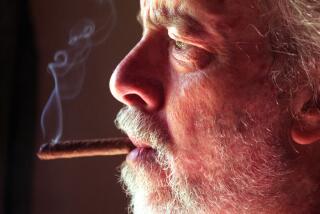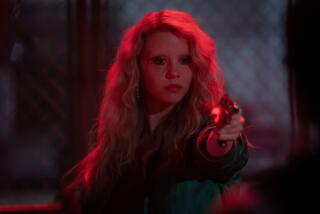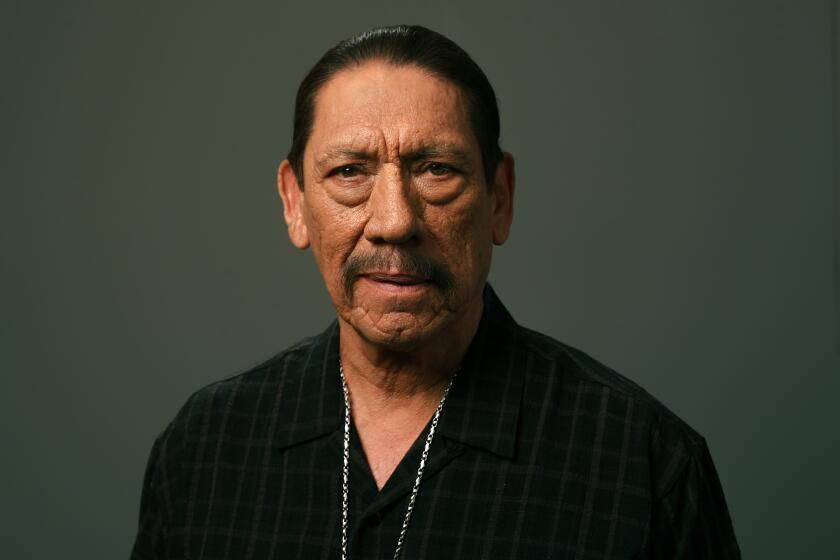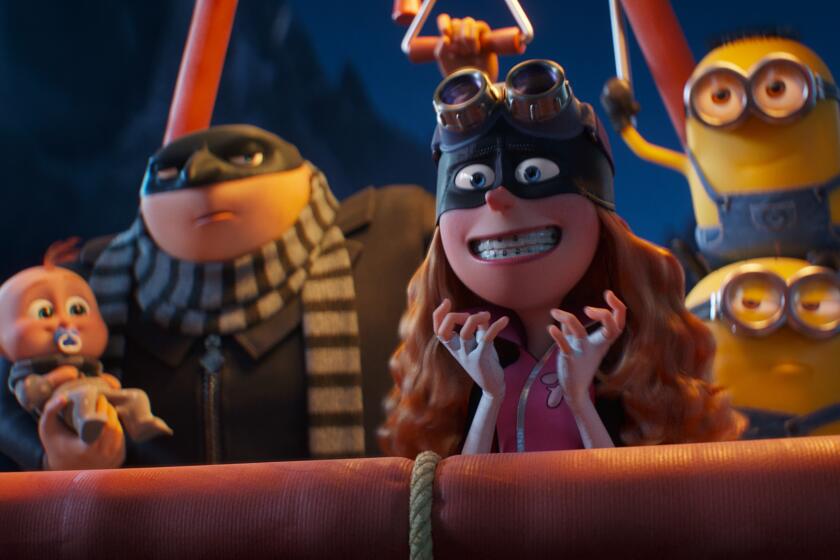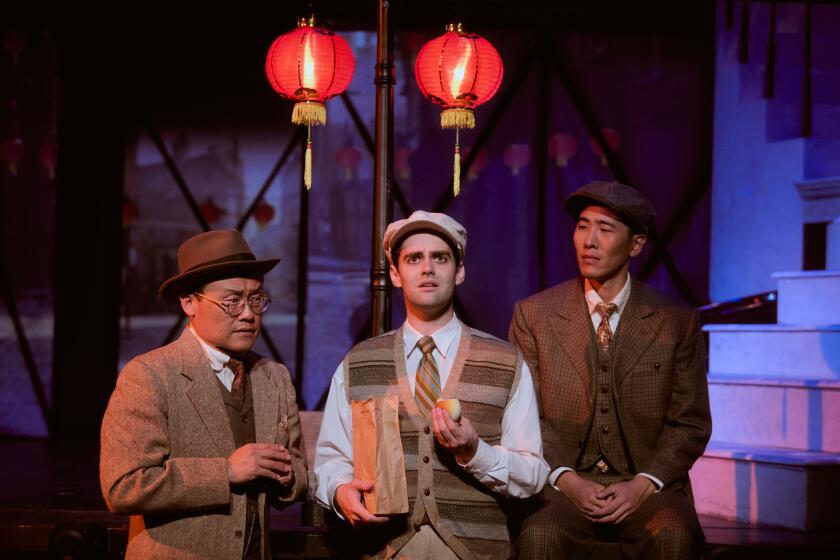MOVIE REVIEWS : MEDIEVAL MAGIC, MODERN ROMP : ‘Ladyhawke’
“Ladyhawke” (citywide) soars. It is enchanted. Laced with medieval magic, it has stalwart knights and tremulously fine ladies, heavy-hoofed horses who might have clattered straight out of German fairy tales and broadswords so heavy you or I could never heft them. Most of all, it is a bold, beautiful, marvelous vision.
“Ladyhawke’s” makers have been canny. How do you shape a medieval fantasy of two achingly destined lovers, Etienne Navarre (Rutger Hauer) and Isabeau of Anjou (Michelle Pfeiffer), separated by the black arts of a jealous (and decidedly unfrocked) bishop, into something that contemporary (i.e., young) audiences would consider seeing? Add an actor they couldn’t resist: Matthew Broderick.
Broderick plays Phillipe Gaston, called Phillipe the Mouse, a scruffy, endearing pickpocket, whose talents have clearly not extended to the riding of horses. As we first see him, the Mouse is busy escaping from the “unescapable” dungeons of Aquila, only a hairbreadth away from the hangman.
The Mouse is a wonderfully realized character, quick and agile enough to deserve his nickname, young enough to be open-mouthed at the beauty of the divine Isabeau and practical enough to live by his wits in these harsh times. What Broderick gives him is a genuine sweetness and ingenuousness that allow his running asides to God to be straightforwardly funny, not cloying. (His English accent is a sometimes thing, yet Broderick is so forgivable that you do forgive it.)
Some may be bothered by the faintly modern character of the dialogue, the work of a virtual platoon of writers (Edward Khmara, Michael Thomas, Tom Mankiewicz, from Khmara’s story, with Mankiewicz credited as “consultant” as well.) Director Richard Donner doesn’t overemphasize the modern flavor (everything in the film moves fast and gracefully), and lines like the Bishop’s, “I believe in miracles; it’s part of my job” fall more like wit than heavy anachronism, at least on these ears.
Since the legend has been around several hundred years, it doesn’t reveal too much to say that the lovers’ plight is sad and seemingly insoluble: the Bishop (John Wood, the senior computer wizard of “WarGames”), yearning after Isabeau, has made sure that if he cannot possess her, neither can her lover, Navarre. Under the Bishop’s curse, each takes an animal form, one by night, the other by day.The only time when both are human together is a glimmering between night and dawn, only a yearning split-second.
Navarre, unsurprisingly, proposes to end their torment by ending the life of the Bishop. To do this, he must get into Aquila, the Bishop’s stronghold. In the vile history of the dungeon fortress, only one person has gotten out, and presumably can thread his way back in: Mouse, thus the setting up of the trio, the loving pair and a spare.
Leo McKern, as a frazzled monk named Imperius whose naivete has brought about the lovers’ predicament, wants Navarre to try another method. (The McKern character owes a lot to “Romeo and Juliet’s” comfortable Friar.) So, interestingly, in an inhumane and fierce era, the struggle is brute force against the powers of reason. (Well, the powers of reason and a pinch of magic. It is the Middle Ages, after all.)
The actors are extravagantly good: Hauer, as always, with a sense of intelligence behind his physical exploits; Pfeiffer, strong and exquisite, and Broderick, embroidering on his role as go-between, is irresistible, comic and wistful by turns. And the presence of such classically grounded British (or in McKern’s case, Australian) actors as Wood and Ken Hutchison to round out the cast gives the film a splendid weight and presence.
“Ladyhawke’s” details are enthralling, fantasy anchored in great, authentic settings, photographed with haunting magic by Vittorio Storaro. Production designer Wolf Kroeger has created Aquila’s fortress-castle, a self-contained walled city with its own cathedral, from one of director Luchino Visconti’s three castles in the mountains near Parma, and it makes a great poetic setting for this action.
With a maximum of imagination and a minimum of clanking armament, costume designer Nana Cecci has created bold, simple designs, daring even a black knight as our hero and a “pure” white-clad Bishop, who is all evil. Cecci’s work is emblematic and marvelous--simple gold-fabric rings form the Bishop’s collar, while Navarre’s helmet-mask is four chevron-shaped bars. (Donner even gives us a knight’s-eye view from inside this mask during a fight scene, so we can see the restricted sightlines and the attendant claustrophobia.)
Although, in other films, transformations have been more painstaking, hair by hair and fang by fang, these human-into-animal effects are brilliant because each actor embodies the character of his/her animal, and possibly because so much of the magic is completed in our minds.
Character is revealed, as well as the tenor of the times, by action and by inference: Young Phillipe the Mouse doesn’t ride because horses weren’t plentiful to the wretched poor. The handsome Captain of the Guard (the outstanding Hutchison), Navarre’s second greatest enemy, is shown to be dastardly in an attempt to save himself.
Marvelous stuff, this, down to its last images, as Isabeau “soars” in a radiant moment of ecstacy, whirling around and around, still inhabited by her winged spirit.
More to Read
Only good movies
Get the Indie Focus newsletter, Mark Olsen's weekly guide to the world of cinema.
You may occasionally receive promotional content from the Los Angeles Times.
